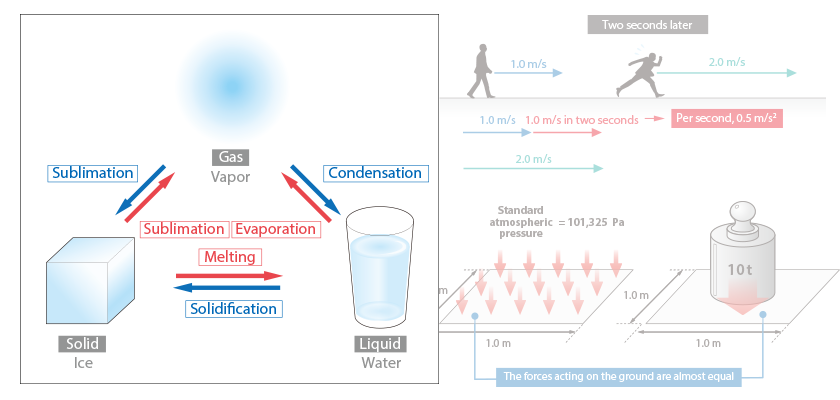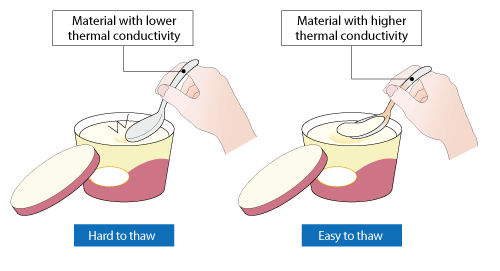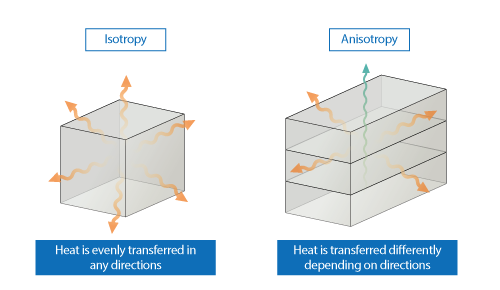Want to Know More! Basics of Thermo-Fluid Analysis 8: Chapter 2 Properties of matter 2.5 Thermal conductivity

Chapter 2: Properties of matter
2.5 Thermal conductivity Fluid/Solid
When the temperature of two objects is different, heat is transferred from the warmer object to the cooler one. Thermal conductivity determines how much heat is transferred and its unit is W/(m∙K).
Ice cream just taken out from the freezer is frozen hard and difficult to eat. But, a spoon called “ice cream spoon” helps scoop the ice cream easily. An ice cream spoon is made of a material with high thermal conductivity. It conveys the heat of the hand holding the spoon to the ice cream and makes it easier to scoop the ice cream.
The material of ordinary spoons is stainless steel and its thermal conductivity is 16 to 27 W/(m∙K). On the other hand, ice cream spoons are often made of aluminum. The thermal conductivity of aluminum is approximately 237 W/(m∙K), which is nine to fifteen times as high as that of stainless steel. We can see that aluminum conveys heat extremely well.

Figure 2.8 Difference depending on thermal conductivity
In most cases, thermal conductivity of an object is the highest in solid state, then liquid, and the lowest in gas state. Solid metals, in which the contribution of free electrons is large, have particularly large values of thermal conductivity. In contrast, the thermal conductivity of air is extremely low. Double glazed windows use this characteristic to enhance the heat insulation capacity of a space.
Want to know more Direction-dependent property
In homogeneous solid metals, heat is transferred evenly in any directions. This characteristic is called isotropy. On the other hand, objects with layered structure may have a property that more heat is transferred to a certain direction. This characteristic is called anisotropy.

Figure 2.9 Isotropic heat conduction and anisotropic heat conduction
Parts with layered structure such as circuit boards and insulators may be modeled as solids which have anisotropy of heat transfer.

About the Author
Atsushi Ueyama | Born in September 1983, Hyogo, Japan )
He has a Doctor of Philosophy in Engineering from Osaka University. His doctoral research focused on numerical method for fluid-solid interaction problem. He is a consulting engineer at Software Cradle and provides technical support to Cradle customers. He is also an active lecturer at Cradle seminars and training courses and the author of serial articles Basic Course of Thermo-Fluid Analysis.


